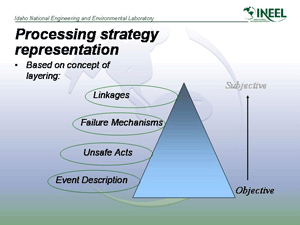 High consequence events that result in significant challenges to the safety, health, or security of facilities, organizations and society occur with some frequency. Whether initiated by natural processes (e.g., earthquake, fires, floods) or human-made activities (i.e., unintentionally or intentionally) they produce challenges for the organizations and people that must respond and manage the spread of their effects. First responders, the front-line groups that deal with the immediate effects of high consequence events are at the highest risk for their personal safety.
High consequence events that result in significant challenges to the safety, health, or security of facilities, organizations and society occur with some frequency. Whether initiated by natural processes (e.g., earthquake, fires, floods) or human-made activities (i.e., unintentionally or intentionally) they produce challenges for the organizations and people that must respond and manage the spread of their effects. First responders, the front-line groups that deal with the immediate effects of high consequence events are at the highest risk for their personal safety.
The concept of first responders incorporates all who respond locally to high consequence events. Depending on the nature of the event, first responders may include groups and organizations that are unaccustomed to working together. Such organizations may have very different accident management methods and techniques that could jeopardize the effectiveness of co-intervention. Within the concept of responding to the event and stabilizing (i.e., reducing the inflow of injuries, providing medical treatment, stopping the spread of the event and its consequences, etc.), we must also include those groups beyond the area of direct intervention. This includes the command and control centers, medical centers, communication mechanisms, evacuation and staging facilities. Based upon the nature of the event, first responders and accident management personnel may include anyone who is officially charged with the responsibility and authority to intervene in events, whether declared as significant or not, using the tools and methods they have at the time.
Effective command, control, and coordination among and between different accident responders is vital to minimize loss of life, property, and to recover vital systems and operations. Information management and organizational performance are key to the concept of effective command and control. Information is needed at all levels of the command hierarchy (assuming such a structure) so that situational awareness is developed and maintained. In a diversely structured command and control organization, such as those envisioned for high consequence and mass casualty events, practices for the use and management of information are needed to ensure coordination among organizations and to provide protection of the organization's assets; especially first responders.
The objectives of this research are to develop models of information management for high consequence events that includes models of the organizations involved to identify critical knowledge for the management of responses to high consequence events, and to contribute to the development of the technical basis for effective emergency management.